100g
Showing 1701–1750 of 2169 results
-

Riboflavin, USP
$180.60 Add to cart View Product DetailsRiboflavin, USP
-

Ribonucleic Acid
$578.24 Add to cart View Product DetailsRibonucleic Acid
-
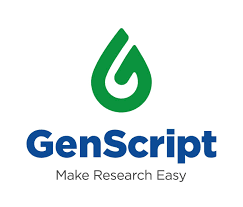
ROR1, hFc, Human
$189.75 Add to cart View Product DetailsROR1 (Receptor tyrosine kinase-like orphan receptor 1), also known as neurotrophic tyrosine kinase receptor-related 1 (NTRKR1), is a member of the ROR family within the receptor tyrosine kinases (RTK) superfamily. Two ROR family members (ROR1 and ROR2) have been identified and are characterized by the intracellular tyrosine kinase domains, highly related to those of the Trk-family receptor tyrosine kinases, and by the extracellular Frizzled-like cysteine-rich domains and kringle domains, which are common to receptors of the Wnt family members.
-

Rose Hips, Extract, 4:1, Powder
$84.25 Add to cart View Product DetailsRose Hips, Extract, 4:1, Powder
-

RRR-Vitamin E Succinate, 1 mg = 0.81 alpha-tocopherol equivalents, USP
$259.38 Add to cart View Product DetailsRRR-Vitamin E Succinate, 1 mg = 0.81 alpha-tocopherol equivalents, USP
-

Rubidium Chloride, High Purity
$1,267.77 Add to cart View Product DetailsRubidium Chloride, High Purity
-

Rubidium Sulfate
$834.15 Add to cart View Product DetailsRubidium Sulfate
-

Rutin, Powder
$628.49 Add to cart View Product DetailsRutin, Powder
-

S-(+)-Mandelic Acid
$411.09 Add to cart View Product DetailsS-(+)-Mandelic Acid
-

S-Carboxymethyl-L-cysteine
$315.69 Add to cart View Product DetailsS-Carboxymethyl-L-cysteine
-

Saccharin Sodium, Dihydrate, Crystalline, USP
$221.70 Add to cart View Product DetailsSaccharin Sodium, Dihydrate, Crystalline, USP
-

Saccharin Sodium, Dihydrate, Powder, USP
$221.70 Add to cart View Product DetailsSaccharin Sodium, Dihydrate, Powder, USP
-

Safranine O
$254.09 Add to cart View Product DetailsSafranine O
-
![Salcomine, [=N,N'-Bis(salicylidene)ethylenediiminocobalt(II)]](https://advatechgroup.com/wp-content/plugins/woocommerce/assets/images/xplaceholder.webp.pagespeed.ic.ANHCL-f_RA.webp)
Salcomine, [=N,N’-Bis(salicylidene)ethylenediiminocobalt(II)]
$315.41 Add to cart View Product DetailsSalcomine, [=N,N’-Bis(salicylidene)ethylenediiminocobalt(II)]
-

Salicin
$650.23 Add to cart View Product DetailsSalicin
-

Salicylaldehyde
$37.82 Add to cart View Product DetailsSalicylaldehyde
-

Salicylaldoxime
$193.64 Add to cart View Product DetailsSalicylaldoxime
-

Sarcosine
$119.85 Add to cart View Product DetailsSarcosine
-

Sarcosine, Ultrapure
$221.59 Add to cart View Product DetailsSarcosine, Ultrapure
-

SARS-CoV-2 ADE-Causing Antibody (S9HC)
$323.44 Add to cart View Product DetailsGenScript SARS-CoV-2 ADE-Causing Antibody (S9HC) reacts with SARS-CoV-2 Spike protein of wild type and delta variant. It can obviously enhance the SARS-COV-2 binding with ACE2.
-

SARS-CoV-2 Neutralizing Antibody (5B7D7), mAb, Mouse
$323.44 Add to cart View Product DetailsThe product is specific for SARS-CoV-2 Spike Protein S1 subunit and its RBD domain
-

SARS-CoV-2 Neutralizing Antibody (6D11F2), mAb, Mouse
$323.44 Add to cart View Product DetailsThe product is specific for SARS-CoV-2 Spike Protein S1 subunit and its RBD domain
-

SARS-CoV-2 Neutralizing Antibody (BS-M0220), mAb, Mouse
$323.44 Add to cart View Product DetailsThe product is specific for SARS-CoV-2 Spike Protein S1 subunit and its RBD domain
-

SARS-CoV-2 Neutralizing Antibody (R323IgM), Human Chimeric
$323.44 Add to cart View Product DetailsThe product is specific for SARS-CoV-2 Spike Protein S1 subunit and its RBD domain. The product can recognize and neutralize Wild-Type SARS-CoV-2 and Variants of Concern (VOC) including Alpha, Beta, Delta, and Omicron. Reactivity with Gamma variant has not been tested.
-
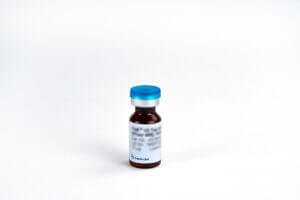
SARS-CoV-2 Nucleocapsid Antibody (23F2), mAb, Mouse
$240.64 Add to cart View Product DetailsThe product is specific for SARS-CoV-2 Nucleocapsid protein.
-
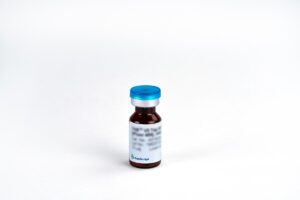
SARS-CoV-2 Nucleocapsid Antibody (3F9), mAb, Mouse
$240.64 Add to cart View Product DetailsThe product is specific for SARS-CoV-2 Nucleocapsid protein.
-

SARS-CoV-2 Nucleocapsid Antibody (4H2), mAb, Mouse
$240.64 Add to cart View Product DetailsThe product is specific for SARS-CoV-2 Nucleocapsid protein.
-

SARS-CoV-2 Nucleocapsid Antibody (HC2003), Human Chimeric
$323.44 Add to cart View Product DetailsThe product is specific for SARS-CoV-2 Nucleocapsid protein.
-
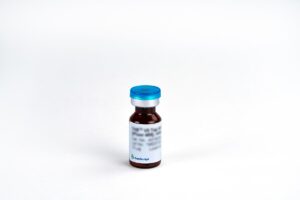
SARS-CoV-2 Nucleocapsid Antibody (hIgM2003), Human Chimeric
$370.01 Add to cart View Product DetailsThe product is specific for SARS-CoV-2 Nucleocapsid protein.
-

SARS-CoV-2 Nucleocapsid Antibody (N22IgA), Human Chimeric
$370.01 Add to cart View Product DetailsThe product is specific for SARS-CoV-2 Nucleocapsid protein.
-
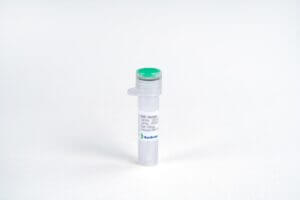
SARS-CoV-2 Nucleocapsid protein
$327.75 Add to cart View Product DetailsSARS-CoV-2 (Severe Acute Respiratory Syndrome Coronavirus 2) also known as 2019-nCoV (2019 Novel Coronavirus) is a virus that causes illnesses ranging from the common cold to severe diseases. SARS-CoV-2 Nucleocapsid Protein is associated with nucleic acid. It is the most abundant protein for coronavirus. Because of the strong immunogenicity of coronavirus Nucleocapsid, it is believed that SARS-CoV-2 Nucleocapsid Protein has potential value for the diagnosis of the virus.
-

SARS-CoV-2 Nucleocapsid Protein (D63G, R203M, D377Y), His Tag
$327.75 Add to cart View Product DetailsSARS-CoV-2 (Severe acute respiratory syndrome coronavirus 2), also known as 2019-nCoV, is a positive-sense single-stranded RNA virus. It caused coronavirus disease 2019 (COVID-19). Nucleocapsid Protein is the most abundant structural protein of the coronavirus which is associated with the nucleic acid. The sublineage B.1.617.2 has been redesignated as a “variant of concern” (VOC-21APR-02) in May 2021, which spreads more quickly than the original version of the virus.
-

SARS-CoV-2 Nucleocapsid protein (G204R, R203K), His Tag
$327.75 Add to cart View Product DetailsSARS-CoV-2 (Severe Acute Respiratory
Syndrome Coronavirus 2) also known as 2019-nCoV (2019 Novel Coronavirus) is a virus that causes illnesses ranging from the common cold to severe diseases. Recently, the new B.1.1.529 variant was confirmed in South Africa and preliminary evidence suggests an increased risk of reinfection with this variant. The B.1.1.529 variant was first reported to WHO on 24 November 2021 and WHO has designated this variant as a VOC (Variant of Concern), named Omicron. There are more than 30 mutations in the spike protein. -

SARS-CoV-2 Nucleocapsid protein (His Tag)
$327.75 Add to cart View Product DetailsSARS-CoV-2 (Severe Acute Respiratory Syndrome Coronavirus 2) also known as 2019-nCoV (2019 Novel Coronavirus) is a virus that causes illnesses ranging from the common cold to severe diseases. SARS-CoV-2 Nucleocapsid Protein is associated with nucleic acid. It is the most abundant protein for coronavirus. Because of the strong immunogenicity of coronavirus Nucleocapsid, it is believed that SARS-CoV-2 Nucleocapsid Protein has potential value for the diagnosis of the virus.
-

SARS-CoV-2 Spike (484Q) Antibody (Q8), mAb, Mouse
$240.64 Add to cart View Product DetailsSARS-CoV-2 Spike (484Q) Antibody (Q8), mAb, Mouse is specific for 484Q site of B.1.617 SARS-CoV-2. This product can recognize single mutant (E484Q) and double mutant (L452R, E484Q), but can not recognize the wild type and single mutant (L452R).
-

SARS-CoV-2 Spike (E484) Neutralizing Antibody (COV2109)
$323.44 Add to cart View Product DetailsThe product is specific for E484 site of wild-type RBD.For specific mutant protein, the product recognizes wild-type RBD, RBD single mutant (N501Y), and RBD single mutant (K417N), but not recognizes RBD single mutant (E484K) and RBD triple mutant (K417N, E484K and N501Y), as seen in Figure 2.
-

SARS-CoV-2 Spike (N501) Neutralizing Antibody (COV2110)
$323.44 Add to cart View Product DetailsThe product is specific for N501 site of wild-type RBD.For specific mutant protein, the product recognizes wild-type RBD, RBD single mutant (E484K), and RBD single mutant (K417N), but not recognizes RBD single mutant (N501Y) and RBD triple mutant (K417N, E484K and N501Y), as seen in Figure 2.
-

SARS-CoV-2 Spike protein (ECD, His & Flag Tag)
$327.75 Add to cart View Product DetailsSARS-CoV-2 (Severe Acute Respiratory Syndrome Coronavirus 2) also known as 2019-nCoV (2019 Novel Coronavirus) is a virus that causes illnesses ranging from the common cold to severe diseases. SARS-CoV-2 Spike Protein is composed of S1 domain and S2 domain. S1 contains a receptor-binding domain (RBD) that can specifically bind to angiotensin-converting enzyme 2 (ACE2), the receptor on target cells. ECD is the extra cellular domain of spike protein.
-
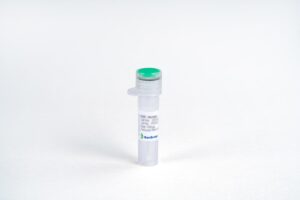
SARS-CoV-2 Spike protein (RBD, E484K, K417N, N501Y, His & Avi Tag)
$327.75 Add to cart View Product DetailsSARS-CoV-2 (Severe Acute Respiratory Syndrome Coronavirus 2) also known as 2019-nCoV (2019 Novel Coronavirus) is a virus that causes illnesses ranging from the common cold to severe diseases. SARS-CoV-2 Spike Protein is composed of S1 domain and S2 domain. S1 contains a receptor-binding domain (RBD) that can specifically bind to angiotensin-converting enzyme 2 (ACE2), the receptor on target cells. It is believed that SARS-CoV-2 Spike Protein (RBD) has potential value for the diagnosis of the virus.
-

SARS-CoV-2 Spike protein (RBD, E484K, K417T, N501Y, Avi & His Tag)
$327.75 Add to cart View Product DetailsSARS-CoV-2 (Severe Acute Respiratory Syndrome Coronavirus 2) also known as 2019-nCoV (2019 Novel Coronavirus) is a virus that causes illnesses ranging from the common cold to severe diseases. Lineage P.1, also known as the Brazil(ian) variant is one of the variants of SARS-CoV-2. This variant has 17 amino acid changes, ten of which are in its spike protein, including these three designated to be of particular concern: N501Y, E484K and K417T. SARS-CoV-2 Spike protein (RBD, E484K, K417T, N501Y, Avi & His Tag) carries a Avi Tag followed by a polyhistidine tag at the C-terminus. It has high binding affinity to human chimeric ACE2.
-

SARS-CoV-2 Spike protein (RBD, His & Avi tag)
$327.75 Add to cart View Product DetailsSARS-CoV-2 (Severe Acute Respiratory Syndrome Coronavirus 2) also known as 2019-nCoV (2019 Novel Coronavirus) is a virus that causes illnesses ranging from the common cold to severe diseases. SARS-CoV-2 Spike Protein is composed of S1 domain and S2 domain. S1 contains a receptor-binding domain (RBD) that can specifically bind to angiotensin-converting enzyme 2 (ACE2), the receptor on target cells. It is believed that SARS-CoV-2 Spike Protein (RBD) has potential value for the diagnosis of the virus.
-

SARS-CoV-2 Spike protein (RBD, His Tag)
$327.75 Add to cart View Product DetailsSARS-CoV-2 (Severe Acute Respiratory Syndrome Coronavirus 2) also known as 2019-nCoV (2019 Novel Coronavirus) is a virus that causes illnesses ranging from the common cold to severe diseases. SARS-CoV-2 Spike Protein is composed of S1 domain and S2 domain. S1 contains a receptor-binding domain (RBD) that can specifically bind to angiotensin-converting enzyme 2 (ACE2), the receptor on target cells. It is believed that SARS-CoV-2 Spike Protein (RBD) has potential value for the diagnosis of the virus.
-

SARS-CoV-2 Spike protein (RBD, L452R, T478K, Avi & His Tag)
$327.75 Add to cart View Product DetailsSARS-CoV-2 (Severe Acute Respiratory Syndrome Coronavirus 2) also known as 2019-nCoV (2019 Novel Coronavirus) is a virus that causes illnesses ranging from the common cold to severe diseases. As of May 2021, three sublineages have been found. Despite its name, B.1.617.3 was the first sublineage of this variant to be detected, in October 2020 in India. This sublineage has remained relatively uncommon compared to the two other sublineages, B.1.617.1 (also known as variant Kappa) and B.1.617.2 (also known as variant Delta), both of which were first detected in December 2020. This variant has the double mutations E484Q and L452R in the spike proteins. Emerging research suggests the variant may be more transmissible than previously evolved ones. Whether the effectiveness of currently-deployed vaccines is affected remains under investigation. Moreover, the sublineage B.1.617.2 has been redesignated as “variant of concern” (VOC-21APR-02) in May 2021, which spreads more quickly than the original version of the virus.
-

SARS-CoV-2 Spike protein (RBD, mFc Tag, CHO-expressed)
$327.75 Add to cart View Product DetailsSARS-CoV-2 (Severe Acute Respiratory Syndrome Coronavirus 2) also known as 2019-nCoV (2019 Novel Coronavirus) is a virus that causes illnesses ranging from the common cold to severe diseases. SARS-CoV-2 Spike Protein is composed of S1 domain and S2 domain. S1 contains a receptor-binding domain (RBD) that can specifically bind to angiotensin-converting enzyme 2 (ACE2), the receptor on target cells. It is believed that SARS-CoV-2 Spike Protein (RBD) has potential value for the diagnosis of the virus.
-

SARS-CoV-2 Spike protein (RBD, mFc Tag)
$327.75 Add to cart View Product DetailsSARS-CoV-2 (Severe Acute Respiratory Syndrome Coronavirus 2) also known as 2019-nCoV (2019 Novel Coronavirus) is a virus that causes illnesses ranging from the common cold to severe diseases. SARS-CoV-2 Spike Protein is composed of S1 domain and S2 domain. S1 contains a receptor-binding domain (RBD) that can specifically bind to angiotensin-converting enzyme 2 (ACE2), the receptor on target cells. It is believed that SARS-CoV-2 Spike Protein (RBD) has potential value for the diagnosis of the virus.
-

SARS-CoV-2 Spike protein (RBD, N501Y, His & Avi Tag)
$327.75 Add to cart View Product DetailsSARS-CoV-2 (Severe Acute Respiratory Syndrome Coronavirus 2) also known as 2019-nCoV (2019 Novel Coronavirus) is a virus that causes illnesses ranging from the common cold to severe diseases. The spike protein mutation N501Y is one of six key contact residues within the receptor-binding domain (RBD) and has been identified as increasing binding affinity to human and murine ACE2.
-

SARS-CoV-2 Spike protein (S1, D614G, His Tag)
$327.75 Add to cart View Product DetailsSARS-CoV-2 (Severe Acute Respiratory Syndrome Coronavirus 2) also known as 2019-nCoV (2019 Novel Coronavirus) is a virus that causes illnesses ranging from the common cold to severe diseases. The spike protein mutation D614G became dominant during the globally pandemic. The D614G mutation enhances its replication ability in upper respiratory tract, transmission ability and viral loads in the patients’ lung epithelial cells. It may also affect vaccine efficacy and antibody therapy.
-

SARS-CoV-2 Spike protein (S1, His Tag, CHO-expressed)
$327.75 Add to cart View Product DetailsSARS-CoV-2 (Severe Acute Respiratory Syndrome Coronavirus 2) also known as 2019-nCoV (2019 Novel Coronavirus) is a virus that causes illnesses ranging from the common cold to severe diseases. SARS-CoV-2 Spike Protein is composed of S1 domain and S2 domain. S1 contains a receptor-binding domain (RBD) that can specifically bind to angiotensin-converting enzyme 2 (ACE2), the receptor on target cells. S protein plays an important role in the induction of neutralizing antibodies and T-cell responses, as well as protective immunity.
-

SARS-CoV-2 Spike protein (S1, His Tag)
$327.75 Add to cart View Product DetailsSARS-CoV-2 (Severe Acute Respiratory Syndrome Coronavirus 2) also known as 2019-nCoV (2019 Novel Coronavirus) is a virus that causes illnesses ranging from the common cold to severe diseases. SARS-CoV-2 Spike Protein is composed of S1 domain and S2 domain. S1 contains a receptor-binding domain (RBD) that can specifically bind to angiotensin-converting enzyme 2 (ACE2), the receptor on target cells. S protein plays an important role in the induction of neutralizing antibodies and T-cell responses, as well as protective immunity.
-

SARS-CoV-2 Spike protein (S1, T19R, G142D, del 156-157, R158G, L452R, T478K, D614G, P681R, His Tag)
$327.75 Add to cart View Product DetailsSARS-CoV-2 (Severe Acute Respiratory Syndrome Coronavirus 2) also known as 2019-nCoV (2019 Novel Coronavirus) is a virus that causes illnesses ranging from the common cold to severe diseases. As of May 2021, three sublineages have been found. Despite its name, B.1.617.3 was the first sublineage of this variant to be detected, in October 2020 in India. This sublineage has remained relatively uncommon compared to the two other sublineages, B.1.617.1 (also known as variant Kappa) and B.1.617.2 (also known as variant Delta), both of which were first detected in December 2020. This variant has the double mutations E484Q and L452R in the spike proteins. Emerging research suggests the variant may be more transmissible than previously evolved ones. Whether the effectiveness of currently-deployed vaccines is affected remains under investigation. Moreover, the sublineage B.1.617.2 has been redesignated as “variant of concern” (VOC-21APR-02) in May 2021, which spreads more quickly than the original version of the virus.






